
Of all the debates involving whiskey or bourbon, this one between the two remains perhaps one of the most animated among whiskey enthusiasts. Though many use the terms "whiskey" and "bourbon whiskey" almost interchangeably, there does exist a defined difference between these two spirits, right from the ingredients to the method of production.
Here in this blog, we'll delve into the subtleties that set the two apart. This will include a look at their production methods, flavor profiles, and other differences between bourbon and whiskey to flesh out what sets bourbon whiskey versus whiskey apart. We will also explore the most popular spirits around the world.
Let's dive into the detailed comparison of these two beloved beverages bourbon versus whiskey:
Understanding Bourbon vs Whiskey
To begin our exploration, it's essential to understand what whiskey and bourbon is and this below table will help in better understanding of the key difference between bourbon and whiskey:
| Aspect | Bourbon | Whiskey |
|---|---|---|
| Bourbon Versus Whiskey | Bourbon is a type of American whiskey that is primarily made from corn. It must contain at least 51% corn in its mash bill and be aged in new, charred oak barrels. Originating from Bourbon County, Kentucky, bourbon has a sweet, full-bodied flavor profile. | Whiskey is a distilled alcoholic beverage made from fermented grain mash. Various grains are used in different proportions, including barley, corn, rye, and wheat. Whiskey is typically aged in wooden casks, which contribute to its distinct flavor and color. |
| Geography | Bourbon must be made in the USA | Whiskey can be produced in many countries, each with its own regulations and styles |
| Aging Process | Bourbon is aged in new, charred oak barrels, which gives it a distinct flavor profile characterized by vanilla, caramel, and oak notes. | Whiskeys are aged in used barrels or barrels seasoned with other spirits, leading to different flavor characteristics. |
| Production Methods | Bourbon production follows strict guidelines. It must be distilled to no more than 160 proof and entered into the barrel at no more than 125 proof. The aging process in new, charred oak barrels is crucial to developing bourbon's characteristic flavor. | Whiskey production involves mashing, fermenting, distilling, aging, and bottling. |
More Facts About Bourbon Whiskey and Whiskey
Beyond their distinct origin and characteristics there are some other major factors that should be acknowledged like spellings, flavor profile, differences in terminologies and production to the diverse aging processes which are responsible for shaping their flavor profiles. As both bourbon and whiskey share vast features, understanding these facts will enhance appreciation for these beloved spirits.
Whiskey vs. Bourbon Whiskey in terms of Flavour Profile
When it comes to the flavor profile of such strong spirits, it can vary significantly due to some factors like ingredients, production methods, and aging conditions.
- Whiskey: Its flavor profile depends on the type of grain used, whether barley, rye, or wheat, whiskey can reveal a range of palate, extending from fruity to floral in the case of malt whisky to spicy and robust in case of rye whisky.
- Bourbon Whiskey: It tends to have a sweeter taste in comparison to other whiskey. It is fuller-bodied and categorized by notes of vanilla, caramel, and sometimes a hint of smokiness from the charred oak barrels.
Bourbon vs Bourbon Whiskey
Ideally, bourbon and bourbon whiskey are both the same. These are terms that are used interchangeably for bourbon. Hence, all bourbons are whiskeys, but not all whiskeys are bourbons.
Whisky vs Whiskey vs Bourbon
The difference between the spelling of whisky and whiskey often leads to mind puzzling. Whiskey is a term used for spirits produced in America and Ireland, while whisky is used for Scottish, Canadian, and Japanese alcoholic beverages. The name clarifies that these are the terminologies used in different regions holding the same meaning. Bourbon is a subset of American whiskey, made according to the strict criteria outlined earlier.
Main Types of Bourbon and Whiskey
They both are a category of distilled spirits, each with its several types and variations. Let's see the type of each they are mainly categorized in:
Types of Whiskey
- Irish Whiskey: Whiskey made in Ireland is known for its smooth and light flavor, primarily made from barley and aged for at least three years in wooden casks. The triple distillation process used in making Irish whiskey results in a cleaner and more refined spirit.
- Scotch Whiskey: Scotch whiskey from Scotland, or Scotch, is made from malted barley and aged for at least three years in oak casks. Sipped for its rich, smoky flavor, which comes from drying the malted barley over peat fires.
- Japanese Whiskey: Japanese whiskey from Japan is inspired by Scotch whiskey but has its unique characteristics. Its process goes by malted barley and is aged in a variety of casks, including Japanese oak, which adds distinct flavors.
- Canadian Whisky: Whiskey from Canada, often referred to as "rye whisky," is lighter and smoother than other types of whiskey. Made from a blend of grains and aged for at least three years in oak barrels.
Types of Bourbon
- Straight Bourbon: It is aged for a minimum of two years and contains no added flavors or colors. It offers a pure bourbon experience.
- Bottled in Bond Bourbon: This type follows strict regulations: it must be aged for at least four years, bottled at 100 proof, and produced in one distilling season by one distiller at one distillery.
- Small Batch Bourbon: Produced in limited quantities from a select number of barrels and often has a more complex flavor profile due to careful blending.
- Single Barrel Bourbon: This bourbon comes from a single aging barrel, resulting in unique, unblended flavors for each bottle.
Comparing Bourbon and Whiskey
Here’s a detailed comparison of the differences between bourbon and whiskey as per their types:
1. Irish Whiskey vs Bourbon

There are some very obvious differences between Irish whiskey and bourbon whiskey, which are based on their methods of production and regional expressions. Irish whiskey is triple-distilled, producing a much smoother and lighter spirit than the usually double-distilled bourbon. The mash bill used for Irish whiskey will usually include malted and unmalted barley, while a significant proportion of corn is integral to the definition of bourbon. It is matured in reused casks bringing in very delicate flavors compared to the strong, sweet, and oaky flavor of the bourbon.
Comparison of Irish Whiskey and Bourbon
| Feature | Irish Whiskey | Bourbon |
|---|---|---|
| Country of Origin | Made in Ireland | Made in the United States, primarily Kentucky |
| Main Ingredients | Mix of malted and unmalted barley | 51% corn, rye, wheat, or malted barley |
| Distillation Process | Triple-distilled | Double-distilled |
| Aging Process | Aged in wooden casks for at least three years | Aged in new charred oak barrels |
| Alcohol by Volume (ABV) | Bottled at a minimum of 40% ABV | |
| Flavor Profile | Sweeter and full-bodied |
2. Japanese Whiskey vs Bourbon

Japanese whiskey has become a global phenomenon, known for its meticulous craftsmanship and attention to detail. While bourbon is characterized by its sweet, full-bodied profile, Japanese whiskey offers a wide range of flavors, from delicate and floral to rich and smoky. Both have their unique charm, and the choice between them often comes down to personal preference.
Comparison of Japanese Whiskey and Bourbon
| Feature | Japanese Whiskey | Bourbon |
|---|---|---|
| Country of Origin | Originates from Japan | Made in the United States, primarily Kentucky |
| Main Ingredients | Made from malted barley and sometimes blends of grains | 51% corn, rye, wheat, or malted barley |
| Distillation Process | Distilled in pot stills | Double-distilled |
| Aging Process | Aged in various types of casks | Aged in new charred oak barrels |
| Flavor Profile | Subtle, balanced, and complex | Sweeter and full-bodied |
3. Bourbon and Canadian Whisky

Canadian whisky differs from bourbon in that it is simply called "rye whisky" because that is the grain used by most historic distilleries. Where bourbon has the rule of 51% corn, Canadian whisky does not, and as such, the distilling uses any type of grain being corn, rye, barley, and wheat. Canadian whisky is also typically blended which makes it smoother and lighter compared to bourbon. Canadian whisky is legally allowed to have stuff other than whisky, and it can even be, by most standards, aged in used barrels further distinguishing it from bourbon's strict production guidelines.
Comparison of Canadian Whiskey and Bourbon
| Feature | Canadian Whiskey | Bourbon |
|---|---|---|
| Country of Origin | Made in Canada | Made in the United States, primarily Kentucky |
| Main Ingredients | Made from blends of grains | 51% corn, rye, wheat, or malted barley |
| Distillation Process | Distilled multiple times | Double-distilled |
| Aging Process | Aged in used barrels | Aged in new charred oak barrels |
| Flavor Profile | Lighter and smoother | Sweeter and full-bodied |
| Alcohol by Volume (ABV) | Bottled at a minimum of 40% ABV |
4. Scotch and Bourbon

Both types of whiskey are popular and have distinct characteristics, origins, and production methods. Scotland primarily makes Scotch from malted barley, offering two variations: single malt and blended scotch. These are often distilled twice and aged in oak casks for a minimum three years. Bourbon is an American whiskey associated with the United States, specifically Kentucky. It requires aging in a new charred oak barrel. Generally sweeter and full-bodied than scotch.
Comparison of Scotch Whiskey and Bourbon
| Feature | Scotch Whiskey | Bourbon |
|---|---|---|
| Country of Origin | Scotland | Made in the United States, primarily Kentucky |
| Main Ingredients | Malted barley | 51% corn, rye, wheat, or malted barley |
| Distillation Process | Double distilled | Double-distilled |
| Aging Process | Minimum 3 years in oak casks (new or used) | Aged in new charred oak barrels |
| Flavor Profile | Light & floral to rich & smoky | Sweeter and full-bodied |
Popular Bourbon and Whisky Brands
The consumption of whiskey and bourbon whiskey extends beyond just drinking; it encompasses rituals, traditions, and social gatherings where these spirits are enjoyed and celebrated. Tastings, distillery tours, and whiskey festivals further contribute to the cultural significance of these spirits.
There are a plethora of brands available in the market, here is the list of some of the most popular bourbon and whisky, which is sure to be pleasing for connoisseurs and beginners alike.
| Bourbon and Whiskey Brands | Origin | Flavour Profile |
|---|---|---|
| Buffalo Trace | Kentucky, USA | Sweet, toffee, citrus |
| Maker's Mark | Kentucky, USA | Caramel, spice, vanilla |
| Macallan | Scotland | Rich dried fruits, spice, oak |
| Blanton’s | Kentucky, USA | Honey, caramel, vanilla |
| Hibiki | Japan | Harmonious blend of malt and grain, delicate |
| Eagle Rare | Kentucky, USA | Complex, caramel, vanilla, oak |
Ultimately, it is the case that whiskey and bourbon whiskey share commonalities in being a distilled spirit from grains, but they differ in definitions bestowed by law, methods of production, and flavor profiles. Whether you enjoy the sweet warmth of bourbon whiskey or the refined intricacies of Scotch whisky, both can provide a window into the fascinating world of spirits that continues to beguile enthusiasts around the world.
Ending Note
From understanding their differences, types and processes to varied flavor profiles and cultures, whiskey and bourbon whiskey show richness. Neat, in cocktail form, or with food, these spirits only keep reinventing themselves in interesting ways, pleasing both connoisseurs and newbies.
Join us in a toast to the artisans and traditions behind whiskey. Check out our website today and build your adventure. Here's to finding the spirit that speaks to you!

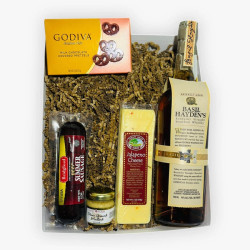
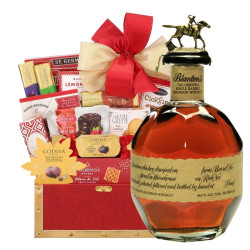
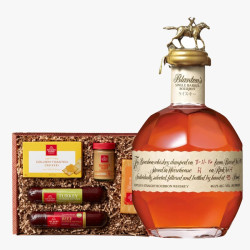
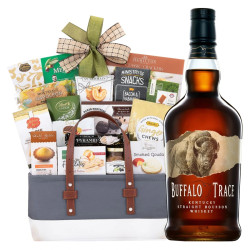
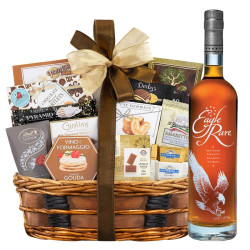
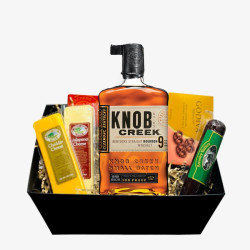
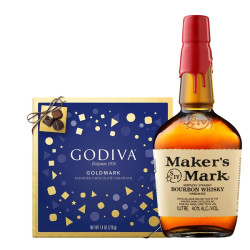
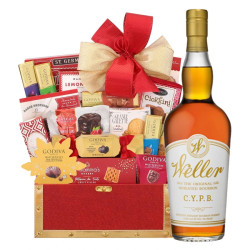













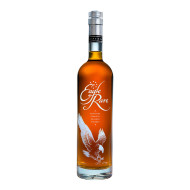
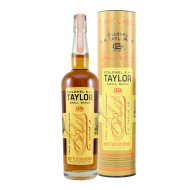

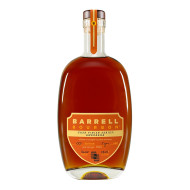


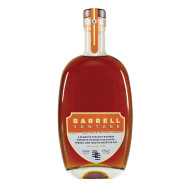
Leave a Comment